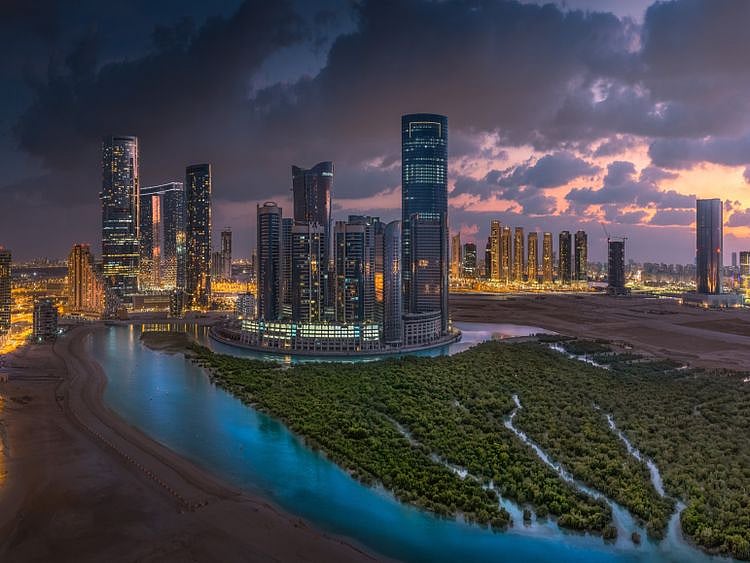Watch: Red List issued for threatened ecosystems in UAE capital Abu Dhabi
Some wadis, coastal plains, mangroves forests, salt marshes, coral reefs are endangered

Abu Dhabi: Abu Dhabi has successfully completed its assessment of all terrestrial and marine ecosystems, and has listed 12 threatened ecosystems in the emirate.
The Abu Dhabi Red List of Ecosystems, which follows standards set by the International Union for Conservation of Nature (IUCN), has revealed two critically-endangered, five endangered, and five vulnerable ecosystems among the 12 threatened ecosystems. The assessment, carried out by the Environment Agency Abu Dhabi, is believed to be the first such assessment of ecosystems in the region.
Dr Shaikha Salem Al Dhaheri, EAD’s secretary-general, said: “The Abu Dhabi Red List of Ecosystems is an excellent example of collaboration with global partners in developing and promoting the IUCN programme and its knowledge products. The Abu Dhabi Red List of Ecosystems will support our efforts to effectively protect threatened habitats and ecosystem in the emirate by including priority threatened ecosystems within our plans to expand our protected areas network. This will further strengthen our efforts to mitigate and adapt to climate change impacts, especially as the UAE prepares to host COP28 later this year.”
Also Read
Video: How environmental inspections unfold in Abu Dhabi, where fines can reach Dh1 millionWatch: How custom-made tiles will restore coral reefs in Abu Dhabi watersHow Abu Dhabi protects UAE’s ‘national treasure’ of date palm trees from pestsAbu Dhabi scores high among 39 cities on City Biodiversity IndexSustainable development
“The list will be vital for development of the emirate of Abu Dhabi as it will help with urban planning, land use and infrastructure projects. We will be helping encourage the growth of Abu Dhabi without compromising on the conservation of the environment and the preservation of our ecosystems.”
The Abu Dhabi Red List of Ecosystems will be published as an IUCN document and will be disseminated across the globe.
IUCN is the world’s oldest and largest global environmental organisation, with members and volunteers spanning 185 countries. Its six commissions focus on driving change through education and communications, as well as learning and knowledge development around the status and threats to species. EAD is one of the strategic partners of the IUCN, which it joined in 2013 as an official member. In 2020, the Ministry of Climate Change and Environment also joined the IUCN, representing the UAE.
Assessment process
A total of 16 terrestrial and marine ecosystems were assessed, and 12 of them were classified as threatened. There were no collapsed ecosystems in the emirate. Mountains and wadis, coastal plains, mangroves forest, saltmarshes, and coral reef ecosystems are some of the most threatened ecosystems in the emirate. Many of these ecosystems are already covered under the network of protected areas managed by EAD.
What are the threats?
“Abu Dhabi’s diverse species and ecosystems are exposed to several threats, including development, pollution, and climate change. The Abu Dhabi Red List of Ecosystems will shape understanding around the risks facing each ecosystem, enabling the EAD to effectively establish a representative network of protected areas. The list is not only the first in the region, but is also the first of its kind to include desert ecosystems and apply the assessment criteria to human-made ecosystems,” said Ahmed Al Hashmi, executive director for terrestrial and marine biodiversity at the EAD.
“[The assessment] has been a major learning experience for the EAD team, especially working with the experts from IUCN and Provita in developing conceptual models for ecosystem functioning and identification of threats. It helped identify data gaps in our understanding, and further highlighted the need for long-term time-series data on processes and interactions. Together with the Abu Dhabi Red List of Species, the ecosystem assessment provides a good understanding of the status of our species and ecosystems, and the need for conservation interventions.”
Protected areas and species
The EAD manages a network of 20 protected areas in Abu Dhabi, which preserve the emirate’s biodiversity, particularly threatened species and ecosystems. The establishment of these areas is linked to extensive monitoring of species and habitats, as well as projects to restore and rehabilitate plants and animal species.
The EAD has also successfully rehabilitated critical plant species – such as the Al Sarh, Ghaf and Samar trees – in their natural habitats to ensure they remain part of Abu Dhabi’s landscape and cultural heritage. Several threatened species are also flourishing, including the Arabian oryx, dugongs, and turtles. In addition, Abu Dhabi’s efforts to restore mangroves and coral reefs, and protect marine biodiversity have also received international recognition, listed among the top 10 pioneering restoration efforts globally under the ‘UN Decade on Restoration’.
Sign up for the Daily Briefing
Get the latest news and updates straight to your inbox
Network Links
GN StoreDownload our app
© Al Nisr Publishing LLC 2025. All rights reserved.